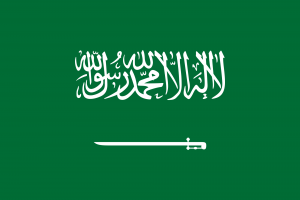Language/Saidi-arabic/Grammar/Adjectives
Hi Saidi Arabic learners! 😊
In this lesson, we will focus on Adjectives in Saidi Arabic grammar. Adjectives are used to describe nouns or pronouns. In other words, they add more information or detail to a noun or pronoun. For example, in English, we say "a blue sky" instead of just "a sky" to give more information about the sky.
Adjectives in Saidi Arabic come after the noun, whereas in English, they come before. For example, in Saidi Arabic, we would say "طيارة كبيرة" (tayara kabeera) which means "a big airplane" in English. In this case, "كبيرة" (kabeera) is the adjective that describes the noun "طيارة" (tayara).
Let's take a closer look at Adjectives in Saidi Arabic.
Consider exploring these related pages after completing this lesson: How to Use "Have", How to Use "Be", Negation & Conditional Mood.
Types of Adjectives[edit | edit source]
There are three types of adjectives in Saidi Arabic: 1. Descriptive Adjectives: These describe the physical appearance or characteristics of a noun. For example, "red," "thin," "happy." 2. Color Adjectives: These describe the color of a noun. For example, "blue," "green," "black." 3. Quantitative Adjectives: These describe the quantity of a noun. For example, "few," "many," "all."
Descriptive Adjectives[edit | edit source]
Descriptive adjectives are the most common type of adjective. They can describe the size, shape, age, color, material, and other qualities of a noun.
Here are some examples of Descriptive Adjectives in Saidi Arabic:
| Saidi Arabic | Pronunciation | English |
|---|---|---|
| سمين | semin | fat |
| عالي | aali | tall |
| جديد | jaded | new |
| قديم | adim | old |
Here is an example dialogue using Descriptive Adjectives:
- Person 1: هادي البيت جديد. (Hadi elbeit jaded.) (This house is new.)
- Person 2: عجبني لون الحيطان، برتقالي. (Ajebni loon elheatan, bertagalii.) (I like the color of the walls, they are orange.)
Color Adjectives[edit | edit source]
Color adjectives, as the name suggests, describe the color of a noun. In Saidi Arabic, we have different ways to describe colors, we can create a color adjective by adding "ي" (y) to the end of the color noun.
Here are some examples of Color Adjectives in Saidi Arabic:
| Saidi Arabic | Pronunciation | English |
|---|---|---|
| أحمر | ahmar | red |
| أبيض | abyad | white |
| أسود | aswad | black |
| أزرق | azrak | blue |
| بني | bouni | brown |
Here is an example dialogue using Color Adjectives:
- Person 1: الباب اللي في الوسط أحمر. (Elbab elly felweset ahmar.) (The door in the middle is red.)
- Person 2: بس ليه مختلف عن باقي الأبواب؟ (Bas leh mokhtalef aan baaki elabwab?) (But why is it different from the other doors?)
Quantitative Adjectives[edit | edit source]
Quantitative adjectives describe the quantity of a noun. They provide information about how much or how many of a particular noun there is.
Here are some examples of Quantitative Adjectives in Saidi Arabic:
| Saidi Arabic | Pronunciation | English |
|---|---|---|
| كثير | ktheer | many |
| قليل | kteel | few |
| كل | kol | all |
Here is an example dialogue using Quantitative Adjectives:
- Person 1: في كتير ناس في الشارع النهاردة. (Fy kteer nas felsharee elnharde.) (There are many people in the street today.)
- Person 2: قليل مننهم اللي ماعارفين يلفوا. (Kteer mennenhom elly maarefeen yelfooa.) (Few of them don't know how to get around.)
Comparison of Adjectives[edit | edit source]
In Saidi Arabic, adjectives can also be compared in the comparative and superlative form. The comparative form is used to compare two things, whereas the superlative form is used to describe something that is the best or the most.
Here are some examples of the comparative and superlative forms of Adjectives:
| Saidi Arabic | Pronunciation | Comparative | Superlative |
|---|---|---|---|
| جميل | gameel | أجمل | أجمل الجميلين |
| قليل | kteer | أقل | أقل القليلين |
| كثير | ktheer | أكثر | أكثر الكثيرين |
Here is an example dialogue using the comparative form of Adjectives:
- Person 1: كان فرحان بمراته الجديدة، بس اللي قبلها كان أجمل. (Kan farhan bmrath eljdedaa, bas elly abla kant ajmal.) (He was happy with his new wife, but the previous one was prettier.)
- Person 2: يعني والله أنا مابفرقش بينهم، بس هيغلب الجميل دايمًا. (Yaani wallah ana mabafarash beinhom, bas hayghalab elgameel dayman.) (I mean, I really can't tell the difference between them, but beauty always wins.)
Enjoy practicing adjectives in Saidi Arabic now that you know more about them! Don't forget to learn more about Saidi Arabic grammar by visiting the Grammar page on Polyglot Club. To learn and practice with native speakers, you can also visit the Find native speakers and ask them any questions!
➡ If you have any questions, please ask them in the comments section below.
➡ Feel free to edit this wiki page if you think it can be improved. 😎

